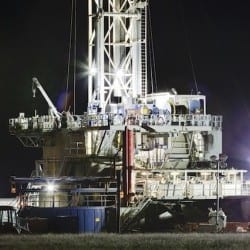You’ve seen the headlines about how great fracking and low cost natural gas is for the US economy. I saw one this morning and almost fell off the treadmill!
Natural Gas is the New Weapon in New Cold War – National Post
Not only is fracking revitalizing the North American oil and gas industry, it is now “weaponized”. This begs the question, “If abundant, low cost natural gas from fracking can be a ‘New Weapon in the New Cold War’, why have we in the plastics industry not realized savings in resin prices from lower cost feedstock?” In fact, as the calendar flipped from 2013 to 2014, resin prices were, and still are, on the rise! As The Wall Street Journal put it in September 2013; that is “The Plastic-Bag Paradox.” It appears there are several factors as play:
- Polymer resins are a global market. The domestic resin manufacturers can export almost all the resin they want into parts of the world where feedstock prices remain high. When you combine that with increasing domestic and global demand you get rising prices.
- Resin manufacturers are fattening their wallet. As WSJ’s James Hagerty reports regarding the financial results of major resin manufacturers, “Instead of passing on lower costs to their customer, however, they are reporting fatter profit margins.”
- Higher profits are being reinvested into new chemical plants. According to the American Chemistry Council, over $70 billion across 100 different projects had been announced by March, 2013. Most of these projects are intended to expand capacity of the chemical supply chain from natural gas to, among others, PVC and polyethylene.
- Capacity is constrained to the point that any unscheduled outage in the supply chain can cause upward pressure on pricing. There were several of these unscheduled outages in late 2013.
- Finally, in one of my favorite Economics 101 phrases, prices are “sticky” on the way down.
So there you have it. Despite the overall positive impact tracking and horizontal drilling techniques are having on the US economy, the associated savings have not trickled their way through the supply chain. The big question is, will they? Some experts say yes, that with the new investment comes increased capacity and prices that will stabilize and potentially fall. For me, given an alternative of high priced natural gas, I will gladly place my bet on tracking creating a better competitive environment for Presco’s vinyl films in the global market. However, with a global market, anything can and will happen and it’s likely that an unprecedented even can occur that will change everything. After all, was anyone predicting in 2005 that the US would be the largest natural gas producer in the world by 2014?
Resources:
US News & World Report “An Energy Lifeline: Fracking a Game-Changer for U.S. Economy”
Forbes “Oil & Gas Boom 2014: Jobs, Economic Growth and Security”
The Independent “Fracking is Turning the US into a Bigger Oil Producer than Saudi Arabia”

